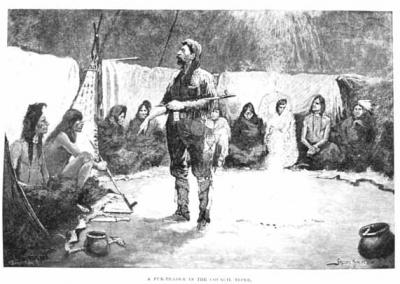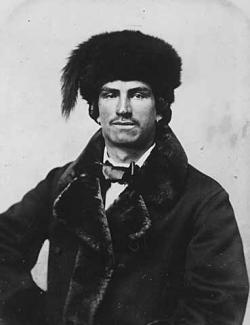 American Indian nations traded for centuries before the arrival of Europeans. Over a 200-year span beginning in the mid-1600s, European traders exchanged manufactured goods for valuable furs with Indian people. Following the American Revolution, the United States competed fiercely with Great Britain for dominance of the North American fur trade. After the War of 1812 there were three main parties involved in the Northwest Territory's fur trade: Indians, fur trading companies, and the U.S. government.
American Indian nations traded for centuries before the arrival of Europeans. Over a 200-year span beginning in the mid-1600s, European traders exchanged manufactured goods for valuable furs with Indian people. Following the American Revolution, the United States competed fiercely with Great Britain for dominance of the North American fur trade. After the War of 1812 there were three main parties involved in the Northwest Territory's fur trade: Indians, fur trading companies, and the U.S. government.

Anderson, Gary Clayton. Kinsmen of Another Kind: Dakota-White Relations in the Upper Mississippi Valley, 1650-1862. St. Paul: Minnesota Historical Society Press.
Brown, Jennifer S. H. Strangers in Blood: Fur Trade Company Families in Indian Country. Vancouver: University of British Columbia Press, 1980.
Gilman, Carolyn. Where Two Worlds Meet: The Great Lakes Fur Trade. St. Paul: Minnesota Historical Society Press, 1982.
Green, William D. A Peculiar Imbalance: The Rise and Fall of Racial Equality in Early Minnesota. St. Paul: Minnesota Historical Society Press, 2007.
Nelson, George. My First Years in the Fur Trade: The Journals of 1802-1804. Edited by Laura Peers and Theresa Schenck. St. Paul: Minnesota Historical Society Press, 2002.
Nute, Grace Lee. The Voyageur. St. Paul: Minnesota Historical Society Press, 1955.
Websites
Seeking a Fortune: The Fur Trader. Tales of the Territory. Minnesota Historical Society.
Primary
Nelson, George. My First Years in the Fur Trade: The Journals of 1802-1804. Edited by Laura Peers and Theresa Schenck. St. Paul: Minnesota Historical Society Press, 2002.
The Fur Trade Collection. Minnesota Historical Society.
Secondary
People of the Fur Trade: On the backs of men, in the hands of women. Northwest Company Fur Post. Minnesota Historical Society.
Historic Sites
North West Company Fur Post




